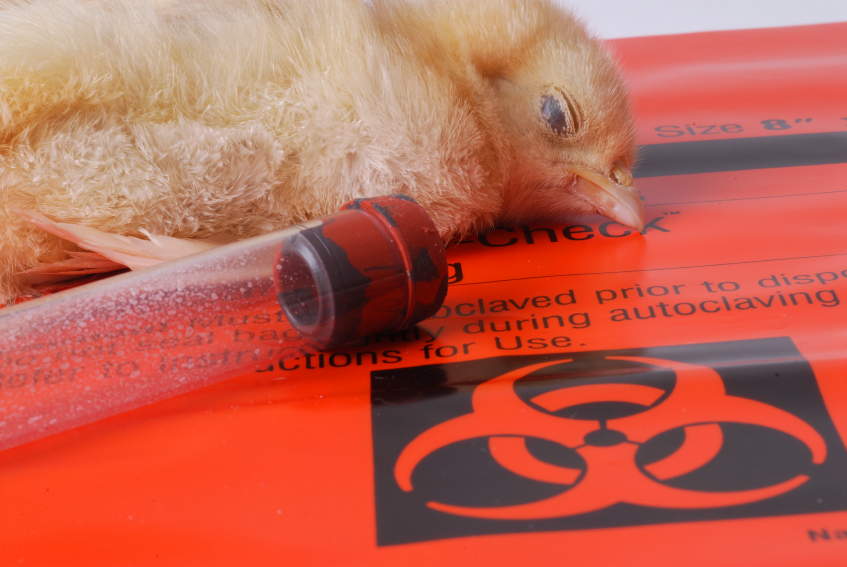
- California Governor Gavin Newsom declared an Emergency after bird flu was detected in cattle at Southern Farms.
- PCR testing is being weaponized and mass-produced to cull flocks and herds, threatening the U.S. food supply.
- Governments are deploying PCR tests to stoke pandemonium and engineer a crisis in the animal agriculture sector.
- PCR tests have a high rate of false positives, leading to unnecessary and harmful mass culling of animals.
- The real public health threat is the hysteria over PCR tests and the government’s aggressive response to animal health issues.
- Natural immunity is crucial for building resilience in flocks and herds, which is compromised by mass culling.
- The U.S. food supply is at risk due to the loss of millions of animals, driving up the price of meat and eggs.
PCR hysteria: Governments mobilize to cull healthy animals, threatening food security
Despite official assurances, a growing number of poultry farmers and animal welfare advocates are sounding the alarm over the widespread misuse of PCR (Polymerase Chain Reaction) testing in agriculture. In a dramatic development, states like California are being mobilized to deploy PCR tests en masse, effectively weaponizing these tests to cull healthy animals and generate a sense of public health crisis.
The issue came to a head when the USDA, driven by PCR test results, began enforcing mass culls of poultry flocks across the country. In Michigan, several hens tested positive for avian influenza, leading to the immediate quarantine and scheduled culling of an entire flock at a major poultry facility. Similarly, Herbruck’s Poultry Ranch, a prominent player in the industry, saw several hens test positive at their Green Meadow Organics facility, resulting in the planned culling of thousands of birds.
These PCR tests, while meant to detect avian influenza, are proving to be a double-edged sword. Traditional diagnostic methods involve directly infecting eggs to subtype influenza A viruses, providing a more accurate indication of the virus's pathogenicity. However, PCR tests, which are now widely used, can amplify even minute traces of viral material left over from past infections. This sensitivity often leads to a high number of false positives, as the tests may not differentiate between benign cases and serious infections.
In California, Governor Gavin Newsom has declared a state of emergency following the outbreak of H5N1 among dairy cows. While the CDC maintains that there is no current evidence of human transmission, all infections have been linked to exposure to infected cattle. Newsom’s emergency declaration, however, underscores the broader government strategy to deploy PCR tests widely and quickly, regardless of the tests' fallibility. The governor's move reinforces the notion that PCR tests are being employed to generate panic, rather than to address genuine health threats.
The real threat: PCR test hysteria and government overreach
The real public health threat lies not in the presence of avian influenza, but in the misuse of PCR tests and the resulting hysteria. These tests, while highly sensitive, are also prone to false positives, leading to the unnecessary culling of millions of animals. This overreaction not only decimates poultry flocks but also drives up the price of meat and eggs, threatening the U.S. food supply.
Moreover, the aggressive culling of animals hinders the natural buildup of immunity within flocks and herds. In healthy, natural conditions, animals develop immunity to circulating pathogens, making them more resilient in the long run. However, by culling entire flocks at the first sign of a positive test, the government is depriving future generations of chickens of the natural immunity that their ancestors would have gained over time.
The result is a vicious cycle of increasing vulnerability among poultry populations, as well as economic and public health consequences stemming from the destruction of millions of harmless animals. The culling of millions of chickens and other animals has caused significant disruptions to the U.S. food supply, driving up prices and creating severe economic consequences for farmers and consumers alike.
In the face of this unfolding crisis, it is essential that policymakers and the public alike question the over-reliance on PCR testing and the aggressive culling policies that follow. Instead of destroying healthy animals, a more sustainable approach would be to allow flocks and herds to gain natural immunity and develop the resilience needed to face future disease outbreaks.
Sources include:
Please contact us for more information.



















